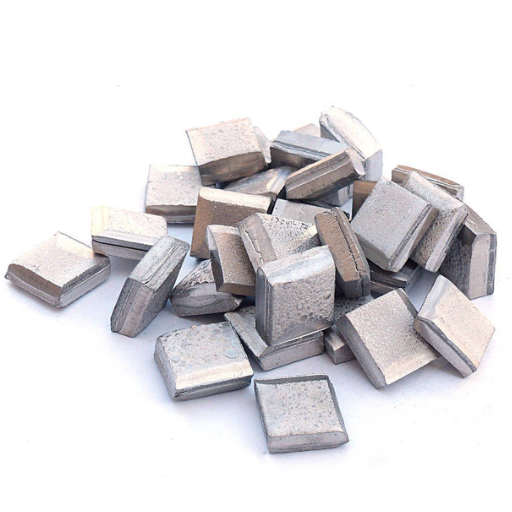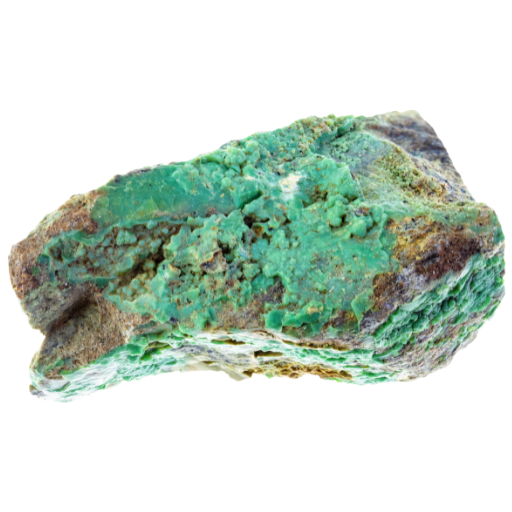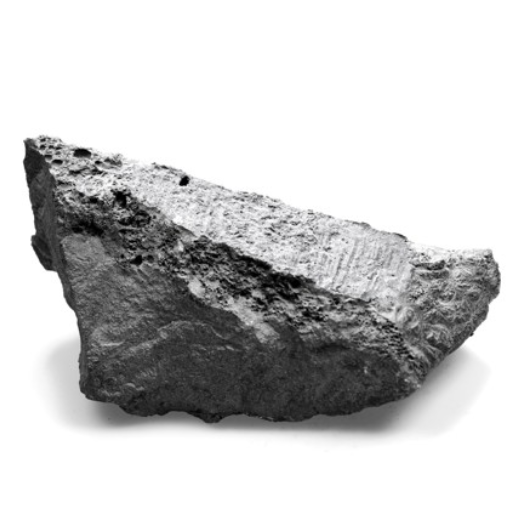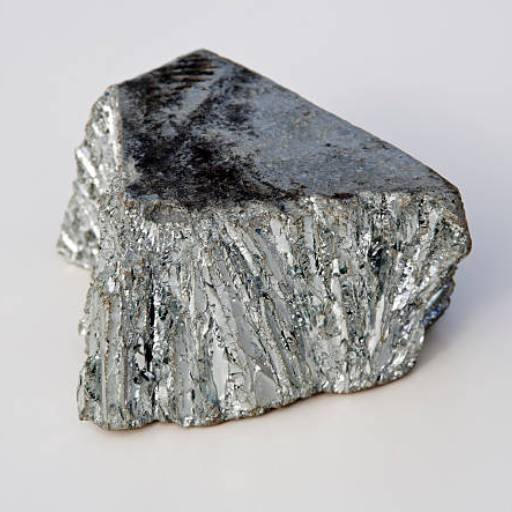What is Raw Nickel?

Image source: https://www.amazon.com/
Unprocessed nickel is what we call raw nickel, which is typically obtained straight out of the mine. Nickel often occurs in nature together with other elements like iron, arsenic or sulfur. The ore deposit is mined, crushed and then refined to give pure nickel as an element. This serves as a basic material for subsequent purification and manufacturing processes that lead to the creation of different products and alloys made from nickel needed for various industrial applications.
Definition and Properties of Nickel
Raw Nickel vs Nickel: What’s the Difference?
The difference between raw nickel and refined nickel is mainly in the means of their production and levels of impurities. Raw nickel, usually acquired directly through mining operations from its ore deposits, is not yet refined metal. It often contains other elements such as iron, sulfur or arsenic and impurities. Crushing, roasting and refining are some additional purification processes raw nickel must undergo before it can be used for industrial purposes to isolate pure element.
In contrast, refined nickel which is commonly known as “nickel” has been highly processed to attain purity levels that are usually over 99%. This is the form primarily utilized in making various products like stainless steel, batteries and special alloys. It helps remove impurities together with unwanted materials hence meeting product requirements in terms of quality and performance for many different technological and industrial applications.
In short while raw nickel represents a more initial unpurified state of metal got directly from mining; refined nickel has undergone processing to obtain high degrees of purity necessary use in numerous valuable applications of the same.
Common Forms: Nickel Squares and More
Nickel comes in various forms for versatile use in different industries having distinct characteristics and applications. Among them are nickel squares, pellets and nickel wire which are widely used because of their multipurpose natures.
Nickel Squares: These are tiny refined pieces of nickel that have been precisely cut. They are usually employed in the production of stainless steel and nickel based alloys. Nickel squares aid in easy monitoring and quantification of the quantity of nickel added during alloy formation, thus ensuring quality control in the final product.
Nickel Pellets: Like nickels cubes, these are small circular pieces made from refined nickel. They have a number of uses such as electroplating, catalysts production batteries manufacturing among others where there is presence of other substances containing nickel. Nickel pellets stand out due to their high purity levels as well as homogeneity that is essential for accurate chemical compositions requiring applications.
Nickel Wire: This type of metal is turned into thin threads that find application across diverse fields ranging from electrical components to health care devices and heating wires among others. It has high resistance to corrosion, a high melting point and excellent electrical conductivity making it an essential material for both common home products as well as specialized industrial goods.
How is Raw Nickel Used?

Applications in Alloys and Industrial Uses
Raw Nickel in Electronics and Batteries
The electronic industry is dependent on nickel due to its excellent conductance and resistance of corrosion. Connectors, relays, switches and other electronic components are commonly made of this metal which increases the reliability and lifetime of these devices. Nickels high electrical conductivity allows it to be an ideal material for efficient and durable electronics.
In batteries, raw nickel is a key component in the production of rechargeable batteries such as nickel-cadmium (NiCd) and nickel-metal hydride (NiMH). These include portable electronic gadgets, power tools and medical equipment that are widely used because they have high energy densities and long lifespans. Additionally, lithium ion batteries utilize element Nickel hence leading to development in energy storage through electric vehicles (EVs) or portable consumer electronics. The involvement of Nickel in these applications indicates how important it is in enhancing modern electronic devices’ performance as well as efficiency in energy storage solutions.
The Role of Nickel in Plating and Coatings
Where Does Raw Nickel Come From?

Nickel Mining and Extraction Processes
There are several stages involved in the extraction of nickel which can vary greatly depending on whether the ore is a sulfide or laterite. In the case where laterite ores are concerned, the process generally starts with mining, followed by drying and then reduction using rotary kilns to make nickel pig iron or ferronickel. Then it undergoes refining through methods such as hydrometallurgy that include processes like pressure acid leaching (PAL) or high-pressure acid leach (HPAL) to increase its concentration of nickel.
The process for sulfide ores commences with mining after which there is crushing and grinding aimed at freeing nickel from surrounding material. The resulting pulp is subjected to flotation so as to generate a concentrate of nickel, which will be smelted in a furnace to produce a nickel matte. Further refining of this matte can be done using techniques such as Sherritt-Gordon procedure and electrolytic refining in order to obtain high purity nickel products.
Both ways are energy intensive and require extensive use of chemicals; hence stringent environmental control measures are necessary. Extraction technology advances and more recycling of materials containing nickel have been put in place in order to reduce ecological effects related with production of the metal.
Nickel Deposits and Nickel Ore
It is also claimed that nickel deposits are divided into two major types: sulphide and laterite deposits. Generally, sulphide deposits are located at great depths within the earth’s crust and occur in areas with a historical background of volcanic and tectonic activity such as Canada, Russia and South Africa. These sulphides usually contain nickel combined with sulfur gas while their ores often have more nickel concentration compared to the laterites. Commonly extracted sulphide ores include pentlandite as well as nickeliferous pyrrhotite.
Laterite deposits for instance are found nearer the earth’s surface in tropical and subtropical regions like Indonesia, Philippines, Australia among others. They result from prolonged weathering of ultramafic rocks which makes them rich in nickel and concentrated in soil. The percentage composition of these minerals is generally lower than corresponding percentages in sulphides though they are easier to mine since they occur on the surface than underground. The average grades of these ores vary from garnierite through limonite to saprolites.
These varieties of nickel ore provide global reserves for this metal required by stainless steel production enterprises, battery producers and other industrial applications globally.
Global Nickel Production Rates
The global production of nickel has experienced notable fluctuations due to different market dynamics and geopolitical factors. As per the latest information, Indonesia, Russia and the Philippines are the top global nickel producers.
Indonesia is leading in terms of nickel output majorly attributed to its abundant laterite reserves and favourable mining policies. Recent investments into Indonesian mining sector have increased its capacity to produce by adding around 30% of total world’s nickel output.
Next is Philippines as a second biggest producer which mainly utilizes its vast laterite deposits. Environmental regulations aimed at conserving nature on one hand give rise to occasional temporary shutdowns and changes in output levels from the country’s mines.
Russia follows as the third largest with significant nickel production from sulfide ores especially those found in Norilsk region. Nickel mining enterprises in this country are well-established and technologically advanced thus making it an important contributor to global production.
Together these three countries act as key players in satisfying the worldwide demand for nickel particularly because of stainless steel manufacturing and rapidly expanding electric vehicle battery industry.
What Are the Different Types of Nickel?

Nickel deposits mainly exist as two types: laterite and sulfide.
Laterite Nickel Deposits: They form in tropical or subtropical climates, where ultramafic rocks undergo intense weathering processes with a result of nickel concentration. They usually thrust close to the land surface enabling the easy mining of them through open pits.This kind is prevalent in areas like Indonesia and Philippines. HPAL (High Pressure Acid Leach) or pyrometallurgical methods are commonly used for laterite ores processing.
Sulfide Nickel Deposits: These are found in either ultramafic or mafic igneous rocks that are formed by a process called magma. Being found at greater depths, they require underground mining techniques. Russia, Canada and Australia tops the list of countries hosting significant sulfide nickel depositations. Flotation is normally used for treating sulfide ores to a concentrate which is then smelted and refined into pure nickel.
Nickel Aluminum and its Uses
Polished Nickel and its Applications
Pure vs. Alloyed Nickel
Diverse characteristics are exhibited by pure nickel and alloyed nickel, making them ideal for different applications. Pure nickel, which contains a lot of nickel (usually more than 99%) is highly resistant to corrosion; it has good thermal conductivity and mechanical properties. It is extensively employed in environments where resistance to both acids and alkalis are vital such as chemical processing equipment and electronics.
Alloyed Nickel on the other hand, involves addition of other elements such as chromium, iron or copper to enhance specific properties like strength, heat resistance and durability. These are used in numerous industries such as aerospace, marine and power generation because the materials must survive harsh conditions called Inconel or Monel.
In conclusion while pure nickel is chosen due to its superior corrosion resistance as well as purity alloyed nickel is preferred majorly due enhanced mechanical properties & versatility under high-stress environments.
Reference sources
- Neonickel – A Guide to Nickel Alloys: Exploring Properties, Applications and Industry Advantages
- This guide provides detailed insights into the unique properties of nickel alloys and their versatile applications across various industries.
- Source: Neonickel
- Nickel Institute – About Nickel
- This source offers an extensive overview of nickel as a naturally occurring metallic element, including its appearance, properties, and common applications.
- Source: Nickel Institute
- Xometry – What is Nickel? Definition, Composition, Types, Properties, and More
- This resource explains the definition, composition, types, and properties of nickel, making it a valuable reference for understanding the metal’s essential role in modern applications.
- Source: Xometry
Frequently Asked Questions (FAQs)
Q: What is raw nickel and how is it used in modern applications?
A: Raw nickel is a highly versatile metal that is essential for various modern applications. It is used in producing stainless steel, batteries, and as a component in many alloys like alnico. It is also widely employed in the manufacture of nickel hardware and nickel sheets.
Q: How does raw nickel compare to refined nickel?
A: Raw nickel and refined nickel differ primarily in their purity levels. Raw nickel is closer to its natural, mined state, whereas refined nickel has undergone purification processes to achieve higher purity levels, often up to 99.9%. Both forms have different applications depending on the requirements for purity and properties.
Q: Where is nickel typically found in the Earth’s crust?
A: Nickel is commonly found in the Earth’s crust in two types of ore deposits: laterite and sulfide deposits. These ores are mined and processed to extract raw nickel metal, which is then refined for various uses.
Q: What are the different forms and grades of raw nickel available in the market?
A: Raw nickel is available in various forms and grades, including ingots, sheets, and powders. The purity levels vary, with some grades reaching up to 99.9% purity. Consumers can find these materials in marketplaces, often labeled with their specific grade and form.
Q: How is raw nickel used in the production of stainless steel?
A: Raw nickel is a critical component in the production of stainless steel. When combined with other metals, like chromium and iron, it enhances the steel’s corrosion resistance and strength, making it suitable for a wide range of applications including cutlery, medical instruments, and construction materials.
Q: What are the occupational health and safety considerations when working with raw nickel?
A: Working with raw nickel involves certain occupational health and safety considerations. Proper ventilation, protective clothing, and equipment are essential to prevent inhalation of nickel dust and skin contact. Companies must adhere to regulations to ensure a safe working environment.
Q: What is the significance of raw nickel aluminum alloys in industrial applications?
A: Raw nickel aluminum alloys, such as those beautifully crafted from aluminum and nickel, are highly valued in industrial applications for their durability, resistance to corrosion, and high-temperature stability. These alloys are used in aerospace, automotive, and marine engineering.
Q: How can consumers purchase raw nickel for personal or small business use?
A: Consumers can purchase raw nickel from various sellers, including online marketplaces and hardware stores like Home Depot. These retailers offer a range of raw nickel products, from sheets and ingots to nickel hardware, available for local pickup or delivery.
Q: What are the uses of nickel sulfate in industry?
A: Nickel sulfate is widely used in electroplating, where it helps to deposit a thin layer of nickel metal onto other materials. It is also used in battery production, as a precursor to high-purity nickel salts, which are essential for rechargeable batteries, including those used in electric vehicles.
Q: Why is knowledge about raw nickel important for sustainable development?
A: Understanding raw nickel’s applications and environmental impact is crucial for sustainable development. Responsible mining and processing practices help reduce the negative effects on the environment, while efficient use of nickel metal in recycling and new technologies contributes to overall sustainability.





